 00:31:00
00:31:00
Cosmic Microwave Background Radiation and its Role in Cosmology
In the first half of the 20th century other galaxies were recognized, their red shift measured and theories of the whole universe were developed. They included Big Bang and Steady State. Arno Penzias and I found the Cosmic Microwave Radiation (CMB) i....
More details | Watch now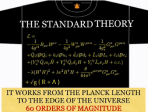 00:44:00
00:44:00
The Future of Particle Physics
Elementary Particle Physics seeks to discover the basic constituents of matter and understand the fundamental forces that act on them. In this lecture I shall review the current state of particle physics, the grand success of the ñstandard modelî, ....
More details | Watch now 00:35:00
00:35:00
A Random Walk in Science
I will discuss my random walk in science, from my graduate student on postdoctoral years testing the Weinberg-Salam-Glashow theory of electro-weak forces, and then to energy transfer in condensed matter systems, the spectroscopy of positronium, laser....
More details | Watch now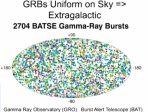 00:30:00
00:30:00
Gamma Ray Bursts: Windows on the Universe
Gamma-Ray Bursts are the most powerful explosions in the universe. They happen about once per day in the visible universe. Their fantastic engines pump out as much energy in a matter of seconds as all the stars in a galaxy do in a billion years. This....
More details | Watch now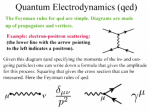 00:37:00
00:37:00
Discovery of the Higgs Particle
Recently the Higgs particle has been discovered at CERN. This particle was theoretically predicted. The historical development of field theory, leading to this prediction will be discussed.
More details | Watch now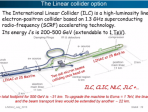 00:29:00
00:29:00
Future Accelerators for Astro-Particle Physics
One of the most remarkable results of astro-particle Physics has been the success of the Standard Model, recently culminated in the discovery of the Higgs particle (Ho). However, the Ho is observable only in few channels at the LHC, in the presence o....
More details | Watch now 00:35:00
00:35:00
The International Year of Light: Celebrating Fifty Years of Laser Revolution in Physics
The year 2015 has been named the International Year of Light, to mark milestones in the science of light which occurred 1000, 200, 150, 100 and 50 years go. I was a young student in physics in 1965, when the cosmic radiation background was discovered....
More details | Watch now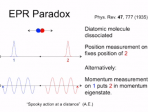 00:39:00
00:39:00
Light Quanta and Their Idiosyncrasies
Maxwell's electromagnetic theory (now 150 years old) seemed in its comprehensive way to be capable of answering all of the questions one might ever pose about the theory of light. But that spell was broken in 1900 by Planck's discovery that light bea....
More details | Watch now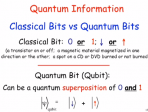 00:31:00
00:31:00
Quantum Information: a Scientific and Technological Revolution for the 21st Century
Two of the great scientific and technical revolutions of the 20th century were the discovery of the quantum nature of the submicroscopic world, and the advent of information science and engineering. Both of these have had a profound effect not only o....
More details | Watch now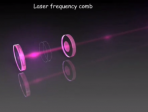 00:35:00
00:35:00
Science with Combs of Light
The spectrum of a frequency comb, commonly generated by a mode-locked femtosecond laser, consists of several hundred thousand precisely evenly spaced spectral lines. Such laser frequency combs have revolutionized the art of measuring the frequency of....
More details | Watch now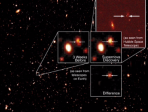 00:33:00
00:33:00
What We Learn When We Learn that the Universe is Accelerating
The 1998 discovery that the universe's expansion is accelerating was not only unexpected, but it also led to the postulation of a previously-unknown 'dark energy' forming almost three-quarters of the "stuff" of the universe. How was this discovery ma....
More details | Watch now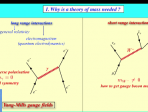 00:33:00
00:33:00
The Origin of Elementary Particle Masses
In the beginning of the 60s, the laws of classical general relativity, Einstein's generalisation of Newtonian gravity, and of quantum electrodynamics, the quantum version of Maxwell's electromagnetic theory, were known. These laws describe long range....
More details | Watch now 00:05:00
00:05:00
Coordination Polymers 1. Introducing: Coordination Polymers
Coordination polymers are a fantastically diverse class of molecular materials. Here we look at a few examples of their unique structures and properties.
More details | Watch now 00:05:00
00:05:00
Coordination Polymers 2. How to Make a Coordination Polymer
Making a coordination polymer is a complicated process with many potential variables. Here we look at the advantages of a few different synthesis methods.
More details | Watch now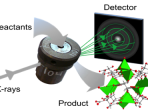 00:05:00
00:05:00
Coordination Polymers 3. Studying Coordination Polymer Formation
Exploiting the unique properties of coordination polymers requires full understanding of their formation. Here we look at how in-situ x-ray diffraction helps to uncover some of the details.
More details | Watch now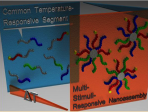 00:07:00
00:07:00
Self-assembled nanoparticles using a mixture of temperature responsive copolymers
Temperature responsive polymer is an interesting material that shows reversible hydration/dehydration behavior in water at 32C, termed as the lower critical solution temperature (LCST). In this video, temperature responsive block copolymers are focus....
More details | Watch now 00:08:00
00:08:00
Self-Made 3D Scanner
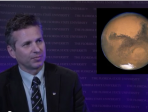 00:04:00
00:04:00
askFSU 2- Rob Mueller at NASA Swampworks
Rob Mueller, Lead Senior Technologist at NASA Swampworks answers some questions about his project to 3D print on Mars and other space objects! Interview by Philip Schlenoff at GEOSET Studios before the Stacking Layers II conference http:/stackinglaye....
More details | Watch now 00:11:00
00:11:00
askFSU 1 : speed of light, tachyons, solar sails, and black holes
Joining Philip Schlenoff is Dr. Jeff Owens, from the Physics department at Florida State University, to answer some physics and astrophysics-related questions!
More details | Watch now 00:01:00
00:01:00
Our youngest scientist
 00:33:00
00:33:00
Nanoscopy – allowing molecules to be examined inside living cells
Eric Betzig shared the 2014 Chemistry Nobel prize with fellow American William E. Moerner and Romanian-German Stefan W. Hell for revolutionising science through the development of super-resolved fluorescence to exceed the accepted limits of tradition....
More details | Watch now 00:30:00
00:30:00
The Hunt May Be Up for the Carrier of the Diffuse Interstellar Bands and other stories
The development of radio telescopes has revolutionized our understanding of the molecular constitution of the interstellar medium ISM. A recent surprise that the element carbon had up its sleeve was the existence of C60, Buckminsterfullerene, the thi....
More details | Watch now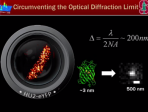 00:32:00
00:32:00
Fun with Light and Single Molecules
More than 25 years ago, single molecules were first detected optically, but how do we really detect a single molecule today, and what good is it? It is an amazing fact that you can even detect single molecules with your own eyes. When a new regime of....
More details | Watch now 00:32:00
00:32:00
Tickling Worms – Surprises from Basic Research
Research, at least my research, has never been linear. I have found that my lab and I often double back on problems after years of inactivity or go off in entirely new directions as dictated by the work and people's interests This lack of direction r....
More details | Watch now
